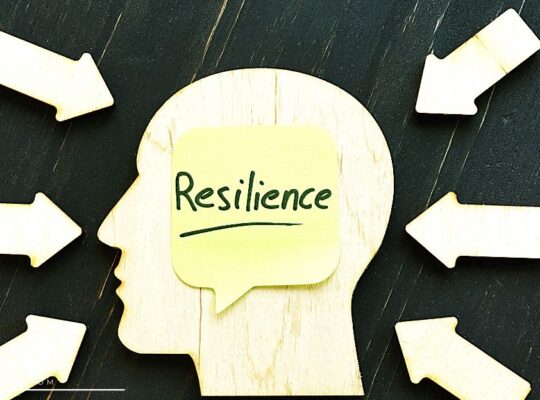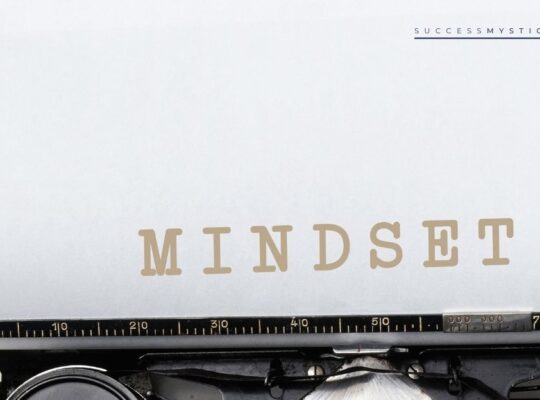The Power Of Morning Rituals
Do you want to set up your days to be the best they can be? Morning rituals help make your days more productive, positive, and fulfilling. A study by Harvard University showed that performing rituals increases a person’s feelings of control and calmness. You can use morning rituals to improve the outcome of your days.
Rituals are repeated activities with movements, words, actions, or objects performed in a set pattern.
According to a study in Personality and Social Psychology Review, rituals have three primary functions.
- Regulate Emotions
- Improve Performance
- Increase Social Connection
To help set up your best days, rituals can boost your mood and make your days more valuable. Your productivity will rise, improving your work and home life.
You can also use morning rituals to strengthen your connection with family, spouse or partner, and coworkers. Morning rituals help balance and prepare you for your best days.
20 Morning Rituals To Set Up Your Best Days
1| Wake Up Early Ritual
But before you think about when to set your alarm, start by getting a good night’s sleep. Waking up early shouldn’t come at the cost of needed rest. Doctors recommend 7-9 hours of sleep a night, depending on your age and how much exercise you usually do.
You can improve your sleep by shutting off your electronic devices an hour before bedtime. According to the Centers for Disease Control (CDC), the blue light emitted from electronic screens decreases the natural levels of melatonin in your body. Melatonin is a hormone that your body releases at nighttime to help you fall asleep. Blue light also can make it hard to stay asleep because it affects your sleep quality.
Waking up early takes advantage of the highest cortisol levels you have all day. Cortisol, often known as the stress hormone, is also responsible for making you awake and alert. A study in the journal Emotion showed that cortisol could also make you feel more relaxed. Your cortisol levels drop throughout the day and into the night but rise again in the morning.
Waking up early lets you get a head start on your day to make it one of the best. A study conducted by DePaul University showed that people who wake up early procrastinate less than those that sleep late. Procrastination keeps you from being productive and won’t give you your best days.
2| Wake Up At The Same Time Ritual
Along with waking up early, your morning ritual should start at the same time every day. While you may occasionally need to wake up earlier than usual or chose to sleep in later, having a routine time to wake up has benefits for your day.
A study in the Journal of Public Health found that having a regular wake-up time is part of a healthy lifestyle. Another study in Cognitive Neuropsychology found that disruptions in sleep patterns can decrease performance. Keeping to a routine sleep schedule improves your day from the very start.
Researchers at the Cleveland Clinic also warn that hitting the snooze button harms your sleep and won’t give you the best days. Sleep happens in cycles, with Rapid Eye Movement (REM) sleep happening right and the end of a cycle. REM sleep is the most restorative part of sleeping, so disrupting that part of the cycle leaves you feeling groggy and tired.
If your snooze alarm is long enough to allow you to fall into REM sleep, waking up repeatedly during that part of the cycle will make you feel even more tired. And if you don’t fall into REM sleep between snooze alarms, the light sleep you get for a few extra minutes won’t help you feel awake and alert.
3| Make Your Bed Ritual
Now that you’re awake get-up and make your bed. The military requires personnel to make their beds each morning as part of their morning ritual.
Making your bed each morning offers these psychological benefits:
- Pride
- Encouragement
- Improved Mental Health
No matter what else happens during the day, you will have pride and a sense of accomplishment each morning after making your bed. Even your worst days can be better knowing that you completed that task. Completing one task also encourages you to complete another task, and so on throughout the day.
Researchers at Providence St. Vincent Medical Center also found that making your bed decreases stress. Your environment often reflects your mental health.
By being organized, productive, and purposeful, making your bed lessens the feeling of being overwhelmed. Set up your best days by making your bed first thing in the morning.
4| Most Difficult First Ritual
Once you’re awake and have made your bed, your other morning rituals can be done in any order you chose. However, you will have your best days when you start with the most difficult tasks first. Successful people share the trait of doing the most difficult tasks first, releasing them from guilt for putting off something they should do.
Doing the most difficult tasks first stops you from procrastinating throughout the day in an attempt to never get to the dreaded tasks. Your days will be happier and productive when you finish difficult tasks first and have the rest of the day to do what you enjoy.
If exercise is the task you dread, sleep in your running clothes so you can workout first thing after waking up. If you hate answering emails, do that right away.
If you’re having trouble working on a personal project, tackle that first. Set a timer to focus on the task, work on it, and then move on with your day.
5| Exercise Ritual
According to a study by the University of California, the morning is the most productive time of day to exercise.
Using mice, researchers found that exercising in the morning provides these benefits:
- More Oxygen Cells in the Body
- More Rejuvenating Effect
- Stimulates Metabolism
- Increased Utilization of Carbohydrates and Ketone Bodies
- Improved Breakdown of Fats and Amino Acids
Having a morning exercise ritual helps to jumpstart your metabolism and keep it working efficiently throughout the day. Many people report feeling more rejuvenated when they exercise in the morning, giving every day the potential to be one of the best days.
Recommended Exercises
Here are exercises recommended by leading health coaches that can wake you up and get you moving:
- Full Body Stretches
- Squats
- Lunges
- Push-Ups
- Planks
- Mountain Climbers
- Surya Namaskar
- Child’s Pose
- Cat Pose
- Half Spinal Twist
The Key Benefits
- Full body stretches move every muscle and joint to warm up your body before more strenuous exercises.
- Squats and lunges exercise your quadriceps, hamstrings, and glutes.
- Building up the number of push-ups you can do increases your strength and stamina.
- Planks help strengthen your core muscles, which improves your balance.
- Mountain climbers or stair climbers also build your core muscles.
- After full body stretches, do squats and lunges. Rest, then continue the routine. Do each exercise three or four times.
You Can Add Some Yoga Poses For Additional Exercise
- The Surya Namaskar, or Sun Salutation, helps activate energy points in your body.
- The child’s pose stretches your spine, ankles, hips, and shoulders. It also stimulates digestion.
- Cat pose helps release pressure on your spine after sleeping. The half spinal twist movement increases oxygen supply to the lungs and vital organs.
You may want to add additional yoga exercises or an active sport to your morning ritual.
Meeting someone to play basketball, racquetball, or another active sport can get your body and your day moving.
Psychologists at Walden University found that having a morning exercise ritual improves your mental health by:
- Reducing Depression and Anxiety
- Decreasing Stress
- Increasing Self-Esteem
- Improving Sleep
- Improves Brain Performance
Exercise increases the levels of norepinephrine and endorphins, neurochemicals that help regulate mood and decrease stress. Accomplishing your exercise ritual every morning improves your self-esteem.
Regular exercise can improve your sleep by regulating your circadian rhythm. Your circadian rhythm is your body’s internal clock for the wake and sleep cycles. A study in Phycology and Behavior showed that exercise raised the level of calcium in the brain in mice.
The rise in calcium increases dopamine modifiers that help control physical, psychological, and behavioral changes, including your brain’s performance.
6| Hot and Cold Therapy Ritual
Some of the world’s most successful people use hot and cold therapy rituals to start their day. Hot and cold therapy can be done by simply changing the temperature of a shower or by more elaborate methods like swimming and sauna use. A study in PlosONE showed that hot and cold therapy resulted in a 29% reduction in days absent from work for illness.
Participants also reported an increase in energy levels. Researchers caution not to use excessive heat or cold levels, which could damage the skin with burns or frostbite.
Hot and cold therapies are also routinely used to loosen tight muscles, reduce soreness, and promote the healing of sprains and strains. If your body is sore after your exercise ritual, hot and cold therapy may help you to feel more relaxed with less pain to start your day.
7| The 80/20 Ritual
The 80/20 ritual, also known as the Pareto Principle, is named after a 19th-century Italian economist, Vilfredo Pareto. Mr. Pareto calculated that 80% of Italy’s land was owned by 20% of the population. The Pareto Principle has become a standard reference in business and life.
Even the United Nations referenced this 80/20 rule in their 1992 developmental report, showing that 80% of the world’s wealth was owned by 20% of the people. Many businesses report that 80% of their sales come from 20% of their customers.
In life, using an 80/20 ritual helps guide what you focus on to start your day. Since you are up early, energized, and ready to maximize your brain’s potential, the morning is the time to review, plan, and focus on what will bring you the most significant rewards and what will set up your days as the best.
As you work through your other morning rituals, focus your efforts on the 20% of your tasks that matter the most. You will have your best days when that 20% of tasks reward you with 80% of your productivity and success.
8| Affirmations Ritual
Affirmations are one of the most powerful morning rituals a person can have. A Social, Cognitive, and Affective Neuroscience study found that affirmations increase self-esteem by activating specific neural pathways in the brain. The research also shows that affirmations provide the motivation that helps people move toward success.
Affirmations are a combination of positive self-talk and belief in future success. What better way is there to make your days the best than by starting out believing they will be the best?
While you can tailor your affirmations to your goals, some everyday affirmations include:
- My past is not a reflection of my future.
- I choose peace.
- I will succeed today.
- I am worthy of love.
- I approve of myself.
- I have the power to create change.
- I am worthy of respect.
- My life is amazing and wonderful.
Affirmations are best said out loud. To remind yourself of your affirmations as a morning ritual and throughout the day, post the list of your affirmations where you will see them every morning. Try speaking your affirmations to yourself in the mirror to tell yourself this is who you are and what you will accomplish.
Steve Jobs, the co-founder of Apple, starts his morning with a twist on affirmations. He asks himself, “If today was the last day of my life, would I be happy with what I’m about to do today?” That question can help you determine what you want your affirmations to be. Then use your answers to create your affirmations and set up your days as the best.
9| Visualization Ritual
Visualization is another powerful ritual for making your days be what you want them to be. While there are many visualization techniques, generally, visualization involves seeing your successes in your mind before you accomplish them.
The more complete your visualization, the more likely you will achieve your goals.
Visualization takes practice. You can start with this basic technique:
- Start by visualizing yourself achieving your goal.
- Fill in the details by visualizing the details:
- What do you see around you?
- What do you hear?
- How does the environment feel?
- How do you feel?
- Practice by repeating your visualization and adding as much detail as you can.
For example, imagine your goal is to get a new job. Visualize getting the phone call that says are hired. Now fill in the details.
Are you at home when you get the call or at your current job? Who do you tell first, and what do they say to you?
Visualize the room you are in when you get the news. Is it hot or cold?
Can you hear sounds from outside or sounds like the copy machine and your coworkers talking? At that moment, how does getting a new job make you feel?
Are you happy, excited, nervous, or do you want to shout it to the world?
Once you’ve built a complete visualization in your mind, practice your visualization as part of your morning ritual.
10| Meditation Ritual
Studies report that meditation helps you focus and make your day the best. A study in the American Journal of Psychiatry showed that mediation reduces anxiety and depression. And studies in Frontiers in Psychology found that mediation helps you focus and limit distractions.
The ability to focus is linked to creativity because it allows your mind to find solutions for challenges without being distracted by other thoughts.
Some of the most useful methods of mediation include:
- Loving-Kindness
- Progressive Relaxation
- Mindfulness
- Breath Awareness
- Kundalini Yoga
- Zen
- Transcendental
Meditation involves more than sitting still and chanting.
There Are Different Mediations For Different Purposes
- Loving-kindness mediation increases positive emotions and reduces stress. Progressive Relaxation helps identify and relax areas with tight muscles.
- Mindfulness mediation focuses on the present, providing improved focus, emotional control, and life satisfaction.
- Breath awareness meditation can be used to help control difficult emotions like anger. By focusing on your breathing, you gain control over your emotional responses.
- Kundalini yoga is a specific yoga practice involving breathing, movement, and mantras. It helps reduce anxiety and depression and improves overall mental health.
- Zen mediation focuses on a person’s thoughts. Each thought during the mediation is noticed without judgment.
- Transcendental meditation aims to elevate a person spiritually while reciting a mantra. A mantra is a repeated verbal expression that can be words or sounds.
While all these mediation methods may be helpful, mindfulness mediation is a simple ritual that can be done to help focus and start your day. Follow these steps:
- Sit comfortably.
- Notice your legs. If you are on the floor, cross them. If you are on a chair, feel them touching the floor.
- Sit up straight.
- Hold your arms out in front of you and let them drop comfortably to your legs.
- Drop your chin and look downward.
- Be present. Focus on your breath and how your body feels.
- Focus on your breathing and follow it in and out.
- When your mind wanders, refocus on yourself in the present.
- If you want to move to adjust yourself, pause first. Plan your movement before you mindlessly perform it.
- Lift your gaze.
- Notice your environment, including sounds, temperature, and smells.
- Notice your thought and emotions at this moment.
- Make a conscious choice to make it one of your best days.
Mediation can seem hard at first. With life’s busy schedules and demands, you may not be accustomed to sitting still. Start by practicing mindfulness meditation for a few minutes and increase your time as part of your morning ritual.
11| Email Ritual
Set up your day as the best by getting through your emails early in the day. According to Lifewire, a top-ten technology site, the average business person gets 121 emails a day. That’s a lot of distractions throughout the day.
When you begin your day, manage any emails you need to follow up on, then focus on new meetings or other scheduling issues. This will help you plan and organize and keep you from missing appointments or meeting requests.
It also helps to have storage folders for the mails you may need to refer to later. Flag any email you may need to come back to later in the day once you’re researched and answer or talked with other people involved.
12| Planning Ritual
Once you have managed your incoming emails, it’s time to plan your day. Having a plan for your workday and home life can give you another one of your best days. A well-planned day reduces stress, keeps you from missing appointments and deadlines, and helps ensure you have enough time to do the 20% off things you need to do. You can use a written planner or a computer version, whichever works best for you.
Follow the 80/20 ritual when planning your best days by using these techniques:
- Schedule Less Important Tasks
- Use Time Blocking
- Schedule Break and Meals
- Leave Some Time Open
- Review for Success
Even though you want to focus on the most useful 20% of things, plan time to do other, less important tasks, too. Otherwise, those tasks may build up, and not getting them done may become a problem. When planning, use time blocking, especially if you work from home or have an irregular work schedule. Time blocking schedules time for a type of task but not necessarily the tasks themselves. For example, you may time block your mornings for work activities, your afternoons for personal projects, and your evenings for family time.
To maximize your performance throughout the day, schedule time for breaks and meals. According to a study conducted by George Mason University, even a short break improves performance. In this study, participants we asked to focus and work on a task for 45 minutes.
One group was given a five-minute break, and the other group wasn’t. The group that took the break was more productive than the group that did not get a break. Your body also needs hydration and fuel to work effectively. Skipping water breaks and lunch can make your body and brain less productive and damage your health.
When you plan, leave some time open during the day to manage last-minute or sudden issues. This way, if your attention is diverted, you will still accomplish the 20% you need to do. At the end of the day, check how your plan worked. If you still find yourself short of time or stressed to finish things, revise your plan until your days are the best.
13| News Ritual
Checking the headlines or seeing what’s new in an area you are interested in helps you prepare for the day. Business and social leaders check the news every morning. They need to be aware of what is happening in the world if they want to influence and change it.
Knowing what’s going on can help you later in the day when you are having a conversation with a coworker, your boss, or a customer. If you have children, you need to understand the world to explain it to them.
To guard against misinformation, find trusted sources or vary which sources you use. Seeing things from a different viewpoint improves your perspective and your ability to manage challenges and find solutions.
Using a news ritual in the morning also helps limit distractions during the day. You can program a service or news site to send you only significant updates during the day, keeping you informed without filling your day with the feeling you are missing important information. Knowledge is one of the keys to understand and a great way to set up your days the as best.
14| Morning Networking Ritual
The morning is the best time to network. Team meetings, one-on-one sessions, and formal networking groups are often held in the morning to maximize everyone’s potential for the day. Consider this scenario.
If a manager has a late afternoon meeting and gives out working assignments, staff members may go home that day worried or stressed about their part in the project. By the following day, they may already feel apprehensive, be unsure how to manage the assignment, or feel behind in completing it.
If the assignments are given early in the day, the staff can discuss them, make plans for completion, and get started. When the staff returns the next day, they will be ready to continue with the task instead of dreading it.
15| Top Priority Project Ritual for Work
If you’ve already planned your best days using the 80/20 ritual. Now dedicate time for the most important project early in your day. Even with the most carefully laid out plan, disruptions and changes to your schedule can happen.
If you have a project that must be completed today, don’t leave it for the afternoon. Inevitably, that will be the day you feel sick by lunch or your child calls to be picked up early from school.
Your boss will appreciate your attention to what must be done first, especially if you need to leave or stop working on the project before it is finished.
16| Top Priority Project Ritual For Self
What is your passion? What do you do that you enjoy, makes you feel good, boosts your creativity? By making your top priority personal project part of your morning ritual, you can begin the day with a sense of balance.
Too often, people wait until the end of the day when they are tired to make time to do what they enjoy. Like scheduling breaks, you need time focused on being mentally and emotionally balanced and having your best days. You can even combine rituals to make your mornings more effective.
Try these combinations:
- Watch the News While Exercising
- Read Wile Using Exercise Equipment
- Listen to Music While Planning Your Day
If combining your top priority personal project ritual doesn’t work well in combination with another ritual, be sure to make time for yourself every day.
17| Family Breakfast Ritual
Many families make it a ritual to connect at dinnertime. It’s something the family can look forward to throughout the day. According to a study by the University of Minnesota, eating together as a family improves diet quality and lowers the risk for obesity and being overweight.
Why not start your best days with a family meal? Having breakfast together helps everyone connect before they head out for the day. You can use a family breakfast ritual to plan the day and ensure that everyone knows where they need to be at what time.
This can be especially important in busy families where children have many after-school activities. The family breakfast ritual is also an excellent time to plan and discuss family vacations or other upcoming events. Similar to holding work meetings in the morning, planning events with your family in the morning helps everyone focus on the outcome and what they need to do before the event.
Morning is also a great time to connect with your spouse or partner. Managing the household budget, planning major purchases, and planning fun activities can all be done in the morning when you are both focused and at your mental best.
18| Healthy Eating Ritual
During your family breakfast ritual, make healthy eating another ritual to start your days in the best way. Researchers and doctors at John Hopkins Medical School found that eating a healthy breakfast improves:
- Alertness
- Feeling Less Tired
- Memory
- Concentration
- Problem-Solving Ability
- Mood
- Cholesterol Levels
- Digestion
- Metabolism
A healthy breakfast gives your body and brain fuel for the day. Many healthy breakfast foods are high in fiber and low in fat. These foods lower cholesterol levels, improve digestion, boost your metabolism, and lower the risk for diabetes.
Healthy Breakfast Foods
- Whole Grain Hot and Cold Cereal
- Whole Grain Breads, Bagels, and English Muffins
- Non- or Low-Fat Milk
- Yogurt
- Fruit
- Eggs
19| Gratitude Journal Ritual
Even though it’s early in the morning and you have your whole day ahead of you, taking time to write in your gratitude journal is an uplifting ritual. Remember, your brain is the most focused in the morning, helping you concentrate on the good things in life.
Starting your day with gratitude is a mood booster that stays with you throughout the day. Like affirmations, writing in your gratitude journal every morning starts your day positively to help set up it as one of your best days.
20| Maintenance Ritual
To be effective, rituals need to be performed repeatedly. A synonym for ritual is the word habit or something you do automatically. Doing your morning rituals for a few days in a row or even a week or two will not make them habits.
A study conducted by the University College London found that it takes an average of 66 days for something to become a habit. They also found that missing an occasional day doesn’t disrupt the habit formation process. If you don’t do your morning rituals on day 38 or 57, don’t despair.
Return to your rituals the next day and keep building better habits. Your morning rituals will set up your very best days!







